Cycling is all about pedaling. No matter the bike, kit, and all the other bells and whistles, if you don’t start moving your legs you’re not going anywhere. In fact, the pedaling motion comes so naturally to most of us that we don’t even give it a second thought. With all the focus on cadence, a lot of times pedaling efficiency gets left behind.
Yes, cadence is important and has a large effect on how efficient your pedaling is, but it’s not the whole story. If you’re completing 90 revolutions a minute for a two hour ride, that’s over 10,000 revolutions. So, just think about the effect it could have on your riding if you made each one of those revolutions everything it could be.
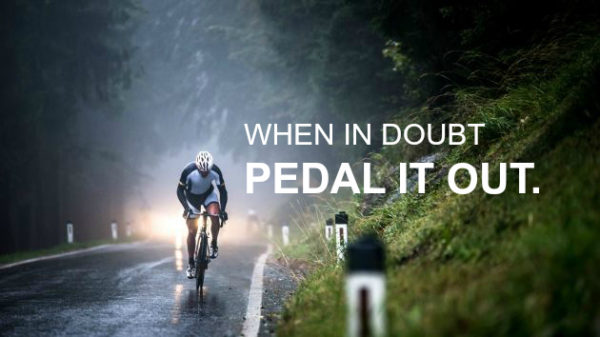
Check Before You Start
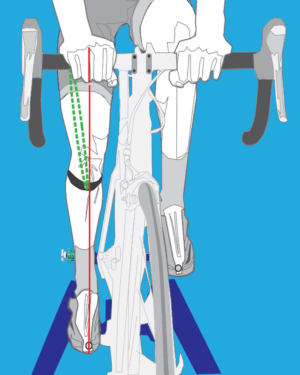
Before your start working on your pedaling technique you’ll want to ensure your bike is setup properly for you. The first thing to look at will be your saddle height. If the saddle is too low you’ll restrict the pedal stroke where you can produce the most power. If it’s too high your hips will start to rock side to side.
You may also want to take a look at crank arm length, as having the right fit for you can help improve your pedaling efficiency. The correct crank length puts your knee in the correct position at the top of the pedal stroke, and still leaves space between your knees and your stomach.
Watch Your Alignment
We’ve all seen bow-legged cyclists (or maybe you are one of them). Although it can be difficult to keep your hip, knee, and ankle in a straight line, this is the goal. Bowing your legs out is not only less efficient, but it can also lead to knee injuries.
Pedal in Circles
Running in circles may not be the way to go, but pedaling in circles definitely is. The first thing you need to do is start looking at pedaling as a complete revolution, made up of different angles, muscle groups, and power (much more than just the downstroke). Efficient pedaling technique is something that can come with time in the saddle, but you can speed up the process by focusing on each part of the movement and applying force around the pedal stroke.
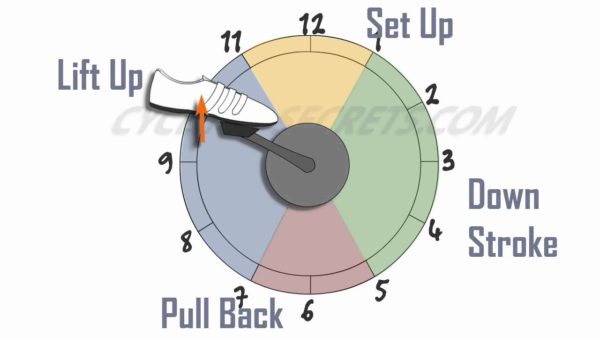
1. The Down Stroke (1 – 5 o’clock)
This is the most natural feeling part of the pedal stroke, and where most of your power comes from. If you think of a single revolution as a clock face, the downstroke happens at about 1 to 5 o’clock. You are pushing down with your heel level to the ground or even about 20 degrees below your toe.
2. The Pull Back (5 – 6 o’clock)
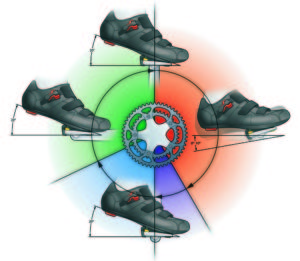
This motion at the bottom of your pedal stroke should feel like scraping your foot back. You should feel the movement in your calf, with your heel lifting slightly. Imagine you have mud on the toe of your shoe that your are trying to scrape off on the pavement.
3. The Lift Up (7 – 11 o’clock)
The goal of the lift up is not so much to produce a ton of power, but to lift the weight of your leg so your opposing leg is not lifting it up with the downstroke (especially at a fast cadence). Your ankle should be at about a 20 degree angle with the movement, and be sure to keep your knee from bowing out. This is when you want to engage your core and glutes to stabilize your legs and make for a smooth motion.
4. The Set Up (11 – 1 o’clock)
The biggest mistake a lot of cyclists make is not initiating the downstroke early enough. The set up is a very short transition, with the feeling of lifting your knees, involving your hip flexors, and getting into the downstroke as soon as possible.
The Upper Body
While pedaling, the upper body should be as quiet (motionless) as possible. Upper body movement may make you feel like you’re putting a little something extra in, but it’s a complete waste of effort. Instead, you want to isolate the upper body from the motion of the legs. This will take a conscious effort at first, but will become second nature over time.
Exercises to Improve Your Pedaling Efficiency
Slow It Down
Find a hill and try climbing at a much higher gear and lower cadence (around 40 rpm) than you normally would. Focus on keeping your upper body still, while taking note of where your naturally strong surges and dead spots are. From there you can work on each aspect of the pedal stroke to get the feel of it being one smooth motion.
Mountain biking is also great for this. If you have large power surges on loose ground, you’ll lose traction, which teaches you pretty quickly not to stamp down on the pedals.
Try a Fixed Gear Bike
Fixed gear bikes force you to pedal in circle, or else you’ll be bouncing around and looking really awkward. This is why track cyclists have some of the most efficient pedaling technique out there. So, if you can get your hands on a fixed gear bike, take it for a spin and focus on making the pedaling as smooth as possible.
One Leg Pedaling
This is exercise is easier on a stationary bike or trainer then out on the road, but it can be done. Start by unclipping one foot from the pedals, while keeping both hips in the normal riding position. Pedal using the clipped in leg for 30 seconds, then clip the other one back in and spin for 15 seconds. Then repeat with the other leg.
This exercise will help you figure out the location of your stroke inefficiency. Pay attention to any part of the movement that is jerky or uneven, then you can start focusing on those areas and making them as smooth as possible.
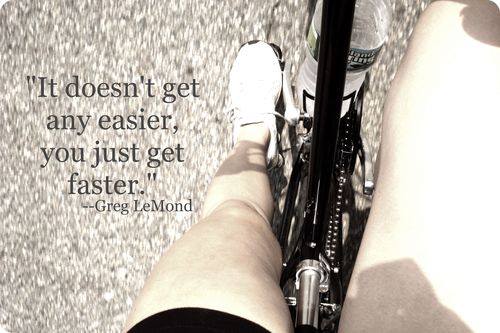
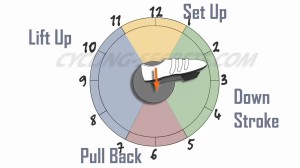 Doesn’t everyone pedal in a circle? No, they actually do not!
Doesn’t everyone pedal in a circle? No, they actually do not!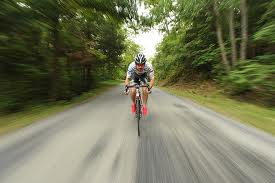 There are several ways to improve your pedaling technique.
There are several ways to improve your pedaling technique.